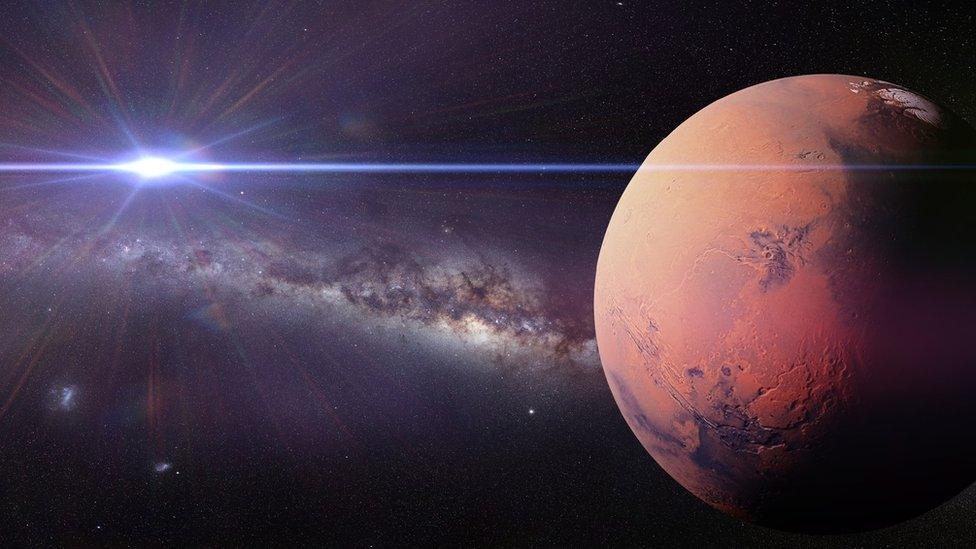UAE space mission has returned its first photo of Mars
- Published
- comments
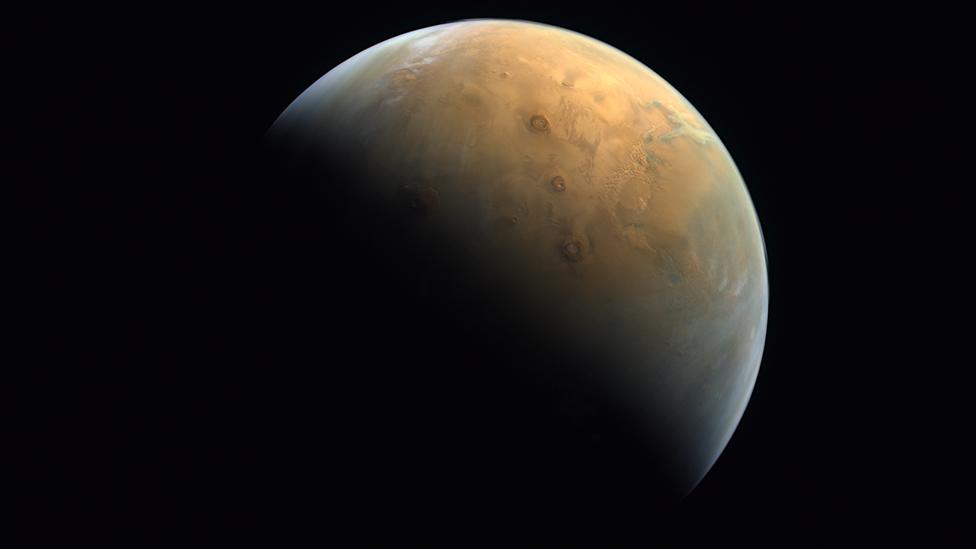
The United Arab Emirates' (UAE) Hope mission has returned its first photo to Earth - and it's of Mars.
The UAE put a probe called Hope in orbit around the red planet with the aim for it to send back data about the Martian atmosphere, studying daily and seasonal changes.
The spacecraft entered Mars' orbit on Tuesday and this is hoped to be the first of many photos!
This makes the UAE the first Arab nation in history to have scientific presence on Mars and it will enable scientists to understand the weather and climate changes on Mars.
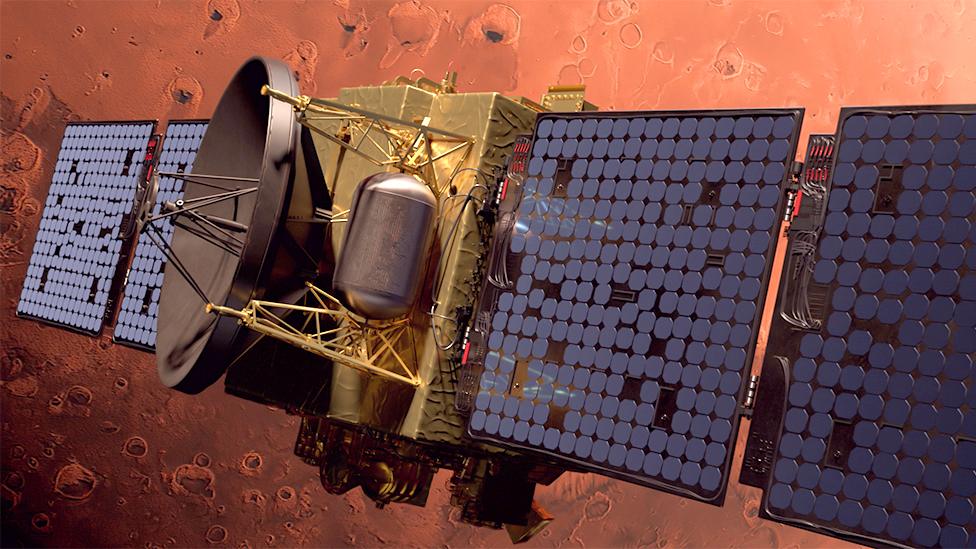
This is some artwork of what the probe looks like
How was the picture taken?
The picture was taken by Hope's EXI instrument from a height of 24,700 km (15,350 miles) above Mars.
It was taken at 8:36 pm on Wednesday, a day after Hope entered Mars' orbit.

What does the picture show?
In the upper left of the photo, you can see Mars' North Pole.
As well as this in the centre of the picture you can see the Olympus Mons, which is the largest volcano in the solar system.
The transmission of the Hope Probe's first image of Mars is a defining moment in our history and marks the UAE joining advanced nations involved in space exploration. We hope this mission will lead to new discoveries about Mars which will benefit humanity.
There are also three shield volcanoes in a line. These are called Ascraeus Mons, Pavonis Mons, and Arsia Mons.
Although covered by cloud, you can also see Valles Marineris which is Mars' canyon system.
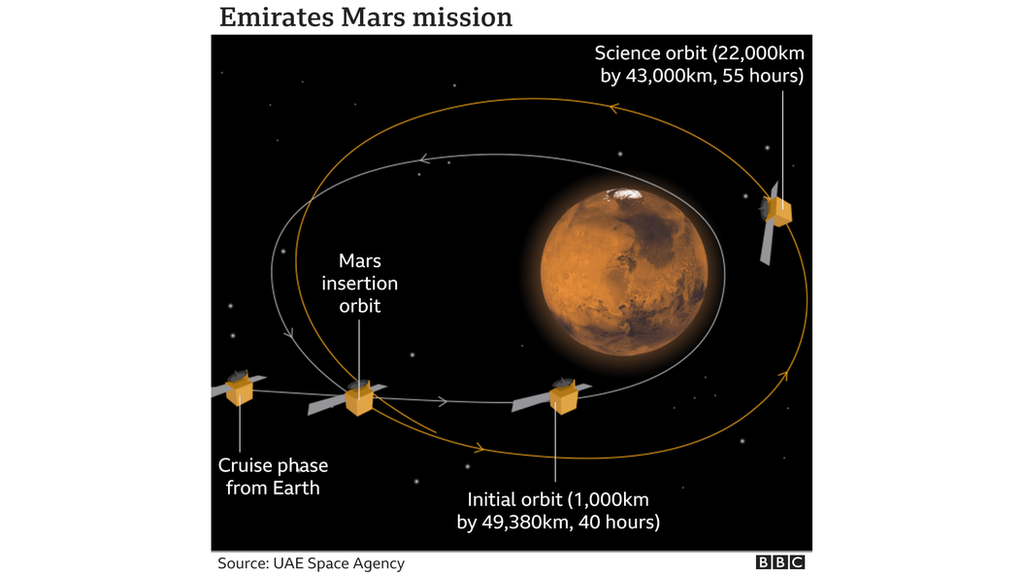
What is next for Hope?
Hope will remain in orbit studying the planet for around two years.
During that time, Hope will record how energy moves through the atmosphere, from top to bottom.
One of Hope's other missions is to study the leakage of hydrogen and oxygen from what will have been Mars' water source.
Studying this will help scientists to understand how Mars went from being a warm and wet planet, to the cold and dusty one it is today!
- Published20 July 2020
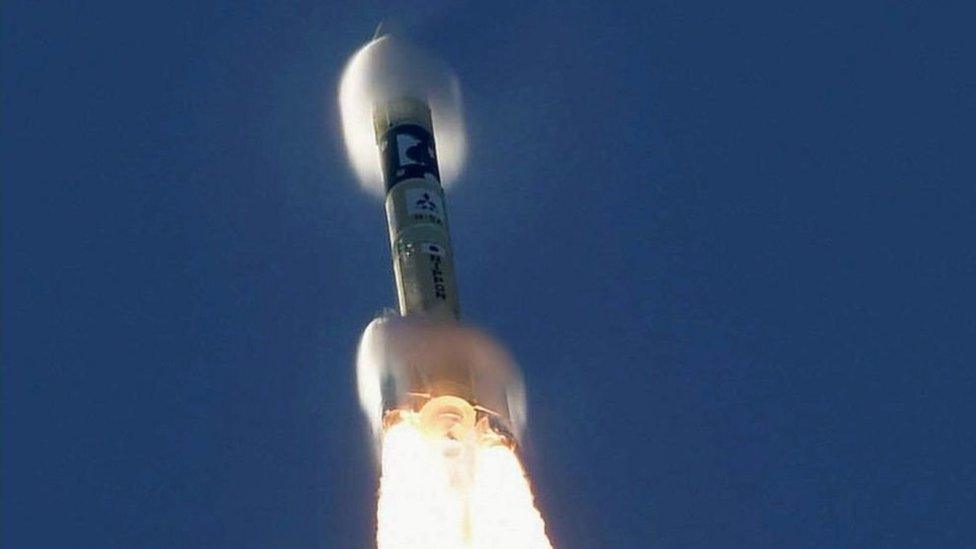
- Published7 June 2020
